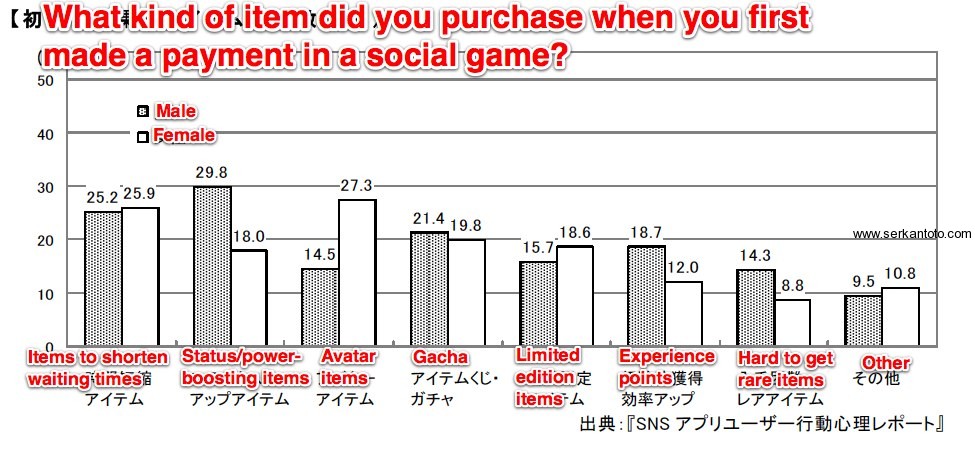There’s no doubt that there’s a lot of money in Japan’s social gaming market to be made: GREE and Mobage operator DeNA alone are projected to hit up to US$2 billion each in sales this fiscal year (see here and here).
Both companies make around 90% of their money with virtual item sales (the rest via ads, lead gen, etc.). But for what kind of virtual items – in social games – are Japanese users actually paying for?
Enterbrain, a Tokyo-based magazine publisher (whose most important asset is Japan’s biggest video game magazine Famitsu), has tried to answer this question in a new industry report (sample / Japanese only).
The most popular items overall are those that shorten waiting times (for example, when waiting for a wounded character to heal or a house to be built). Men apparently favor items that boost their “status”, while women tend to like paying for avatar-related items.
For an explanation of what “gacha” is, please click here.
Here is what Enterbrain found out (translations added by me):

Note:
The chart is based on a user survey among 1,600 Japanese people aged between 15 and 59 (selected out of 69,750 people). These users stated they play social games at least 2-3 times per week.
They were surveyed between February 25 and 28 this year, answering the question what kind item they purchased when they first made a payment in a social game. Multiple answers were possible.
